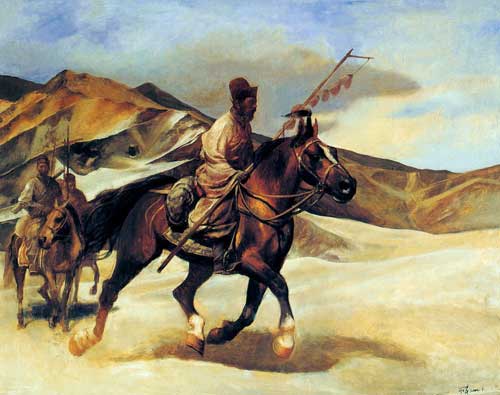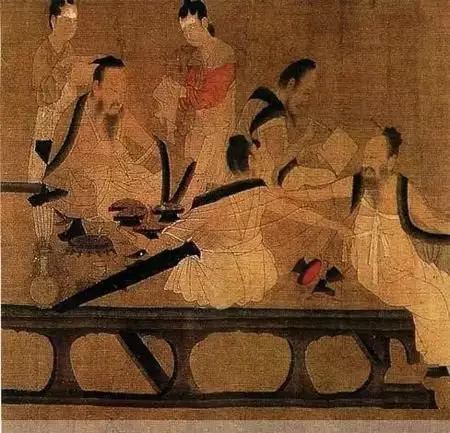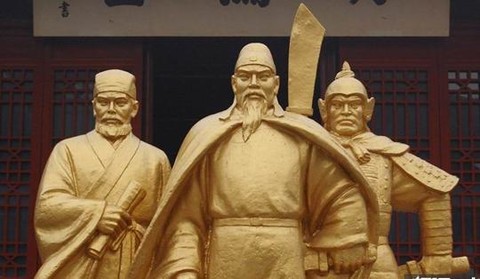Hu and Han are “Members of One Family”
4 min readThe Tang Dynasty was witness to another grand unification. The Central Government and the bordering ethnic groups developed closer relations. Emperor Taizong announced that,”I love the Han and ethnic groups equally though most favorthe former all along.”After defeating the Eastern Turks in the South Desert during the Zhenguan Period, the Tang Dynasty adopted the policy of “all tribes following their local customs.”Turkish aristocrats were still the governors, and generals had the jurisdiction over tribal members. All the previous ethnic customs and ways of life were retained. In the meantime, nearly 10,000 Turks moved to Chang’ an, including more than 100 Turkish chieftains who were honored as senior officials with five-rank or above. Before long, the Tang Dynasty set up the Protectorate General of Anxi in the Western Regions, and the Protectorate General of Beijing was further established during the regime of Wu Zetian, respectively governing areas south and north of the Tianshan Mountain.

Moved by the open policy, chieftains of northwestern tribes addressed Emperor Taizong respectfully as Tian Khan (the great heavenly Khan) and supported him as the mutual leader. During the later Zhenguan Period, more than 10 tribes in North Desert, including Huihe, submitted to the Tang Dynasty in succession, and opened a “road of Khan”in the desert. The court set up 68 posthouses along the path to receive emissaries and offer services for traveling businessmen. After that, Emperor Suzong, Emperor Dezong and Emperor Muzong all married one of their princesses to the Huihe Khan for peace-making marriages.

Emperor Taizong also accepted the request of Songzan Gambo, the chieftain of Tubo on the Tibetan Plateau, to marry Princess Wencheng to him. When the princessentered Tibet, she also brought along lots of handiworks, grains, vegetable seeds, herbal medicines and tea, as well as more than 100 kinds of production techniques and medical books, making Tubo “gradually affected by the advanced culture”and greatly driving forward local economic and cultural growth. After succeeding to the throne, Emperor Gaozong conferred the title of Chief Commandant of Escorting Cavalry upon Songzan Gambo and honored him as the King of Xihai Jun. During the regime ofEmperor Zhongzong, he further married Princess Jincheng to Chidai Zhudan, the king of Tubo, who called himself the “nephew”of the emperor and said “Tubo and Han are members of one family.”In 823, the Tang Dynasty and Tubo entered into an alliance in Changqing, and the Monument to the Tang-Tubo Alliance still stands in front of the Jokhang Temple in Lhasa today, serving as witness to the friendly relations between the Tang Dynasty and Tibet.
The middle seventh century saw the rise of Heishui and Sumo tribes of the Mohe ethnic group in the Songhua River and Heilongjiang River basins. During the Zhenguan Period, Heishui Mohe started to pay tribute to the Tang Dynasty. In the early eighth century, the Tang Dynasty established Heishui Governor-General Mansion and appointed its chieftain as the governor. In the beginning of Kaiyuan Period, Emperor Xuanzong conferred the title of King of Bohai upon Dazuorong and honored him as the Governor of Huhan Prefecture. Bohai had close relations with the central plains, with the buildings in its capital, Shangjing Longquanfu (present-day Bohai Town, Anning City, Heilongjiang Province), similar to those in Chang’ an of the Tang Dynasty. The prefecture and county system were also copied, as well as the advanced production techniques in the central plains.

There were six tribes-Six Zhaos-in the Erhai area during the Sui and Tang dynasties. In the early eighth century, the Tang Dynasty supported South Zhao to unify the Six Zhaos, and Emperor Xuanzong honored its chieftain as the King of Yunnan. The advanced techniques taken by craftsmen from the central plains promoted the development of the local economy. When growing stronger, South Zhao came into conflict with the Tang Dynasty, resulting in alternating wars and peace. At the endof the eighth century, South Zhao once again submitted to the Tang Dynasty. In 794, the King of South Zhao met the emissary team of the Tang Dynasty at the Divine Temple in Diancang Mountain. From then on, South Zhao has been deeply affected by the Tang Dynasty in a wide range of aspects like administrative organization, production techniques, and social lives, making great contributions to the development of the southwestern regions.
With more than 800 provinces, prefectures and counties were established in bordering ethnic group areas, the early Tang Dynasty boasted a territory reaching the sea in the east, the Anxi and Congling Mountain areas in the west, the Mongol Plateau in the north and the South Sea in the south, and was characterized by unprecedented affluence and power. Such aspects as folk customs and art also showed features of communication and the merging of Hu and Han cultures. Food like dumplings, and the silks and porcelains of the central plains were deeply loved bythe ethnic groups, and tea became an important material for exchange. Meanwhile, the central plains saw the popularity of Hu clothes and food. The frescoes and sculptures from the Tang Dynasty also reflect a distinct glamour of the Western Regions, either in expression or artistic style. The dancers and bands mostly were from diverse ethnic groups, and the musical instruments include those of both Hu andHan styles, manifesting the characteristics of the time when Hu and Han were members of one family and diverse elements mixed together.








